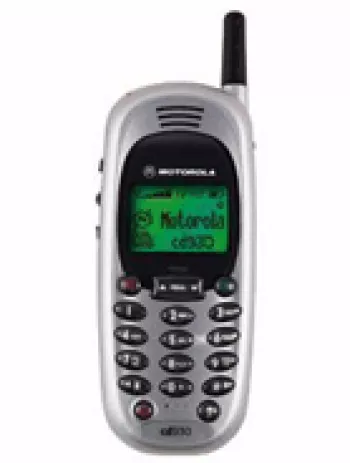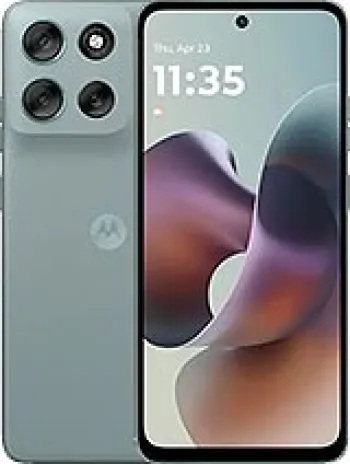
Overview of the Motorola E770
The Motorola E770 was a feature phone that debuted in the final quarter of 2005. With a focus on providing essential communication and multimedia functionalities, it was a part of Motorola's efforts to capture the mid-range segment at a time when mobile phones were transitioning from basic calling devices to more complex personal assistants. Its design and features reflected the technological trends of the mid-2000s while maintaining Motorola’s characteristic robustness.
Design and Build
The Motorola E770 came with dimensions of 111 x 46 x 20.7 mm and weighed 115 grams. The compact size made it a comfortable device to carry and use, fitting nicely into pockets and bags. The build used durable materials, ensuring the phone could withstand daily wear and tear. Utilizing a typical candy bar design, the phone sported a 1.9-inch TFT screen capable of displaying 65K colors with a resolution of 176 x 220 pixels.
Display
The 1.9-inch display was adequately bright and vibrant for its time, with a pixel density of approximately 148 PPI. While not as sharp as the displays seen on contemporary smartphones, the TFT screen provided clear visuals suitable for basic image viewing and interface interaction. The small size contributed to an overall modest screen-to-body ratio of about 22.3%.
Network and Connectivity
Operating on GSM and UMTS technology, the Motorola E770 supported 2G and 3G connectivity. GSM bands included 900, 1800, and 1900, while the 3G band was UMTS 2100. With speeds reaching up to 384 kbps on 3G, it was among the faster feature phones at its time for data transmission, allowing for moderate web surfing and basic online interactions.
Camera Capabilities
In terms of photography, the Motorola E770 featured a VGA main camera (0.3MP). This camera enabled users to capture basic images and record videos, providing a simple yet effective tool for capturing moments on-the-go. Though it pales in comparison to the high-resolution cameras of modern smartphones, it served its purpose for quick snapshots and multimedia MMS messages during its release period.
Memory and Storage
The phone came with 32MB of internal storage, which was standard for feature phones of that time, and included a microSD slot for expanding storage capacity. This was critical for users who wanted to store additional multimedia files such as photos, videos, and downloadable games or applications. The phonebook could accommodate up to 700 entries, providing ample space for contacts.
Battery Life
The Motorola E770 was powered by a removable Li-Ion 1020 mAh battery. This provided a standby time of up to 310 hours and talk time of up to 4 hours and 20 minutes. Given the phone's features and power requirements, this battery life was considered average, ensuring the phone could comfortably last a day of normal usage without frequent charging.
Audio and Multimedia
The phone supported downloadable polyphonic ringtones and included a loudspeaker for media playback. However, it lacked a 3.5mm audio jack, which was a noticeable omission for those wanting to use standard headphones. Bluetooth 1.2 was available with A2DP for wireless audio, which was relatively advanced for the time. The E770 did not support FM radio or WLAN, focusing instead on core mobile functions and multimedia capabilities.
Additional Features
Being a feature phone, the E770 offered basic yet essential functionalities. These included SMS, MMS, email, and instant messaging capabilities. The device also supported WAP 2.0/xHTML browser for basic internet browsing. Java support (MIDP 2.0) allowed users to download and run additional applications and games, expanding the phone's utility beyond its out-of-the-box offerings.
Software and User Interface
On the software side, the Motorola E770 used a proprietary operating system common to feature phones of the era. Its user interface was straightforward, focusing on ease of navigation and accessibility to all core functions. The phone offered menu-based interactions, which were intuitive and required minimal learning for new users.
Market Impact and Availability
Upon its release, the Motorola E770 was positioned as a mid-range device, appealing to users who required functionality beyond basic calling yet did not need the advanced features of high-end smartphones. Priced at approximately 100 EUR, it offered a balanced mix of value and capability. However, it has since been discontinued as smartphones have taken over the mobile phone market.
Key Features of Motorola E770
- Supports GSM and UMTS network technologies.
- 3G connectivity with speeds up to 384 kbps.
- Compact and lightweight design (115 g).
- 1.9 inches TFT display with 65K colors.
- Memory expandable via dedicated microSD card slot.
- VGA main camera with video capability.
- Bluetooth version 1.2 with A2DP.
- MiniUSB port for connectivity.
- Reliable battery life with up to 310 hours of standby time.
- Supports multiple messaging formats: SMS, MMS, Email, and Instant Messaging.
Disadvantages of the Motorola E770
- Discontinued: No longer available for purchase new.
- Display: Small size at 1.9 inches with low resolution of 176 x 220 pixels.
- Camera: Only VGA resolution, lacking the quality of more contemporary devices.
- Battery: Limited talk time of up to 4 hours and 20 minutes.
- 3.5mm jack: Absent, limiting headphone options.
- Connectivity: No WLAN or GPS support.
- Radio: Absent, no FM or other radio capabilities.
- Internal Storage: Limited to 32MB, which is quite minimal by today's standards.
- Selfie Camera: None available, limiting options for video calls or self-portraits.

View Also
More Phones
All Rights Reserved +14266 Phones © Mobilawy 2025

























